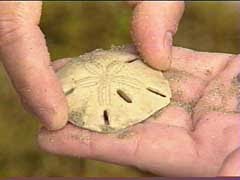Wildlife: Feeding Backyard Birds
Thursday, October 25th, 2012
Platform bird feeder
This is Passport to Texas Supported by the Wildlife and Sport Fish Restoration Program
Setting out backyard feeders encourages birds to gather where you can easily enjoy them.
10—Feeders should be a supplement to a garden. That’s what you should concentrate on, is creating a garden that is going to provide some of the materials, and then use your feeders to put the birds where you can easily see them.
Mark Klym coordinates the Wildscaping Program for Parks and Wildlife. The types of feeders and food you supply determines the birds that visit.
35—Black oil sunflower seed is your best. I certainly do not recommend using the mixes that have a lot of red millet or milo in them because they tend to attract a lot of house sparrows. Use different types of feeders. Not all of our birds can easily feed on a column that is hanging with a very short perch. Put out a platform feeder and you’ll get some of your traditionally ground-feeding birds that will go to the platform. Put out some peanut feeders for some of our bigger jays. You might want to look at putting out a sock feeder, which is just a sock that has thistle seed in it, for the finches. And they’ll actually pull it out of the cloth sock.
There you have it: creating a stunning and educational experience in your own backyard is as easy as hanging a sock filled with seeds. Remember to keep those binoculars handy.
05—There is no place better in the world for attracting birds than right here in Texas.
The Wildlife and Sport Fish Restoration Program supports our series and funds diverse conservation projects throughout Texas.
That’s our show… For Texas Parks and Wildlife…I’m Cecilia Nasti.





 Passport to Texas is a
Passport to Texas is a  Passport to Texas is made available by:
Passport to Texas is made available by: